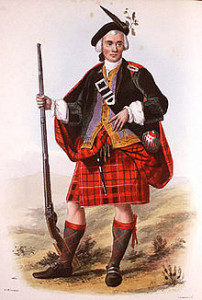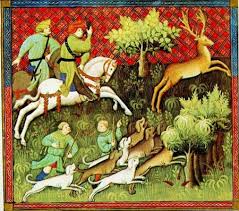 Of crofters, Celts and claymores: the Celtic Magazine and the Highland cultural nationalist movement, 1875–88 by Ian B. Stewart
Of crofters, Celts and claymores: the Celtic Magazine and the Highland cultural nationalist movement, 1875–88 by Ian B. Stewart
This article examines the cultural nationalist movement in the Scottish Highlands during the period 1875–88, through the lens of the Celtic Magazine, a source which has been overlooked by historians. The cultural nationalist movement resulted from the intertwining of the crofters’ land reform movement with a Celtic cultural revival. It was propelled by intellectuals who promoted the distinctive Celtic nature of the Highlands and demanded recognition from the government. An imagined Highland nation, distinct from the rest of Scotland, arose from the cultural nationalist movement but fitted within a wider ‘unionist-nationalist’ identity.
Royal and non-royal forests and chases in England and Wales by John Langton
Royal forests comprised land devoted primarily to hunting. They were a distinctive feature of Norman and Angevin England and Wales. Expressing the crown’s arbitrary power to prevent holders of land from using it as they chose, they were generally resented. Royal forests must disappear to enable individuals to utilize landholdings for their own private economic purposes, and so for commercially oriented land uses to occur. However, it is shown here that ‘royal forests’ did not constitute a hermetic historiographical category, distinct from non-royal ‘chases’. There were royal chases as well as royal forests; monarchs had private forests and chases as well as royal ones; and non-royal earls, barons and high churchmen possessed and created forests and chases of their own, which were as well protected and displayed the same non-economic imperatives and cultural consequences as those of the crown. They were not a transient feature of medieval times which inevitably disappeared with the inexorable progress of commercial economy. Some of them continued to flourish, in all their distinctiveness, through early modern times into the nineteenth century. In consequence, the transition between the medieval and modern worlds was not as clear-cut nor as complete as is suggested by the conventional narrative of English historical development.
Obstinate juries, impudent barristers and scandalous verdicts? Compensating the victims of the Gordon Riots of 1780 and the Priestley Riots of 1791 by Jonathan Atherton
Historians have devoted considerable attention to both rioting and the rise of the adversarial trial in the eighteenth century. Despite this, no research has explored how victims of riot used the courts to seek compensation. Through a comparison of the Gordon Riots and Priestley Riots, this article examines the factors that determined the relative success or failure of such cases at trial. It is suggested that the ambiguities of the Riot Act, the choice of counsel and the political and socio-economic context in which the trials were held could all influence the juries’ verdicts.
